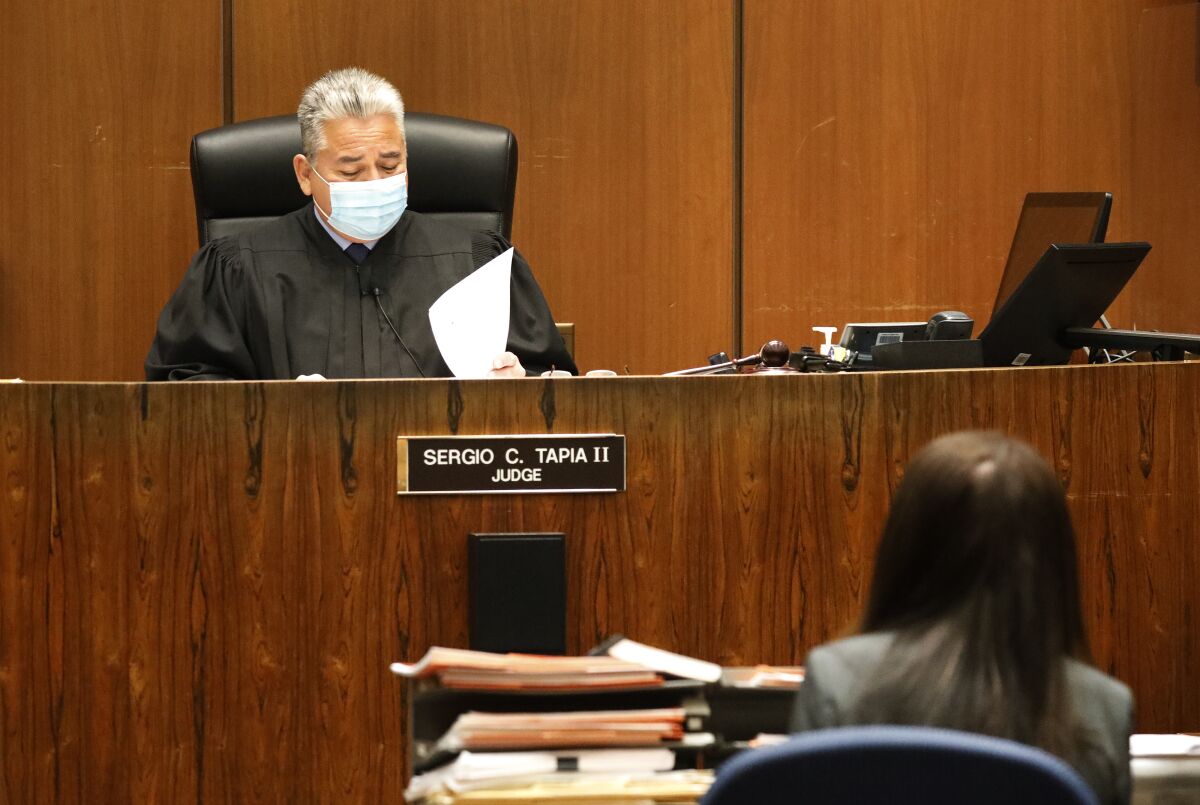How do I get a restraining order against my ex who keeps texting me
Recently updated on June 7th, 2025 at 05:05 pm
Ann.Cal.Fam.Code § 6211“Domestic violence” is abuse perpetrated against any of the following persons:
- A spouse or former spouse.
- A cohabitant or former cohabitant, as defined in Section 6209.
- A person with whom the respondent is having or has had a dating or engagement relationship.
- A person with whom the respondent has had a child, where the presumption applies that the male parent is the father of the child of the female parent under the Uniform Parentage Act (Part 3 (commencing with Section 7600) of Division 12).
- A child of a party or a child who is the subject of an action under the Uniform Parentage Act, where the presumption applies that the male parent is the father of the child to be protected.
- Any other person related by consanguinity or affinity within the second degree.
The original text is here
Comparison with Criminal Case
If you’re a victims of domestic violence, then you can file the following legal cases:
- Criminal Case: In a criminal case, the burden of proof is beyond a reasonable doubt, the highest burden of proof.
- Domestic Violence Restraining Order : This is considered a family law case, and the victim has to give some evidence and generally the burden is low and the victim must establish “reasonable proof of a past act or acts of abuse.” Cal. Family Code § 6300.For Domestic Violence Restraining Order, you just need evidence to support that abuse occurred which is defined as bodily injury or fear that you will get bodily injury.The legal language is in California Penal Code 13700: “intentionally or recklessly causing or attempting to cause bodily injury, or placing another person in reasonable apprehension of imminent serious bodily injury to himself or herself, or another.”
The court considers accusations of abuse leniently, and favors on issuing orders as long as there is some evidence.
Does my situation qualify for Domestic Violence Restraining Order (DVRO) or some other type of restraining order
Here’s a summary of the different types of restraining orders. There are a few different types of restraining orders and typically only one of them may apply to your situation. The first step is to see if any of the different types of restraining order applies to your situation or is remotely related as that might help you decide whether to apply .
The types are:

Domestic Violence is for situations involving domestic violence which is when a victim has been abused by a romantic partner (spouse, domestic partner, girlfriend/boyfriend) or a stepson or stepdaughter or a family member. For a complete overview of what is domestic violence please review: What is the legal definition of Domestic Violence in California
 Civil harassment applies to situations involving repeated irritating behavior, stalking, abuse, or threatened by someone you are not as close to as is required under domestic violence cases, like a roommate, a neighbor, or more distant family members like cousins, aunts or uncles, or nieces or nephews.
Civil harassment applies to situations involving repeated irritating behavior, stalking, abuse, or threatened by someone you are not as close to as is required under domestic violence cases, like a roommate, a neighbor, or more distant family members like cousins, aunts or uncles, or nieces or nephews.
 Elder Abuse: A senior citizen (or an adult who cannot function independently) is being abused by a caretaker, neighbor or child .
Elder Abuse: A senior citizen (or an adult who cannot function independently) is being abused by a caretaker, neighbor or child .
 Gun Violence: Typically, a police officer or sheriff who thinks someone might hurt themselves or someone else with a gun. This can stop that person from buying or owning a gun. It can’t order them to stay away from someone.
Gun Violence: Typically, a police officer or sheriff who thinks someone might hurt themselves or someone else with a gun. This can stop that person from buying or owning a gun. It can’t order them to stay away from someone.
 Workplace Violence: An employer usually requests these to protect their employee(s) from a person who has stalked, harassed, been violent or threatened violence at the workplace.
Workplace Violence: An employer usually requests these to protect their employee(s) from a person who has stalked, harassed, been violent or threatened violence at the workplace.
 School Violence involves violence, or threat of, against one or more students of a private postsecondary (after high school) school. This type of restraining order may only be granted if the threat of violence is for an act that would likely take place on the school’s campus, and is requested by school official.
School Violence involves violence, or threat of, against one or more students of a private postsecondary (after high school) school. This type of restraining order may only be granted if the threat of violence is for an act that would likely take place on the school’s campus, and is requested by school official.
What if I am Under 18 years of Age
Restraining orders can be requested by anyone 12 years or older, and without your parent’s permission. If you are under 18, then in some situations , a judge may ask you to have a trusted adult help you in your case after you have filed for the petition. such as a parent a counselor or a neighbor.
Situation Examples
Example 1: Stepson is verbally abusive
My stepson doesn’t allow me to set any boundaries to his verbal abuse and intrusive behavior. As a family we have been living in the same apartment for nearly two decades now. He verbally abuses me by calling me a whore if I am seen talking to any man. During this time he is intoxicated so I am fearful of having a discussion as his anger will quickly get out of control, and he will hurl things at home thereby inducing more fear in me. Such behavior has been going on for over a decade now so I am not sure about the date of the first incident now. One day I very carefully chose my words and mentioned that he should seek counseling or move out. He was enraged and threated me that he will utterly destroy me, my work reputation, and expose some minor things I did to the immigration authorities.
Example: Stepson blackmails and destroys property to control and induce fear
Today, Michael was armed with a pistol and seemed to be under the influence of an unidentified substance. He made threats to create false narratives with the aim of jeopardizing my 28-year accounting career, stating he would falsely accuse me of engaging in illegal financial activities. His menacing statement, “if you mess with me, I’ll retaliate,” was accompanied by destructive actions, such as damaging property in my home, including creating a hole in the wall. Michael’s behavior becomes particularly alarming when he is under the influence of drugs.
Is a restraining order helpful?
The purpose of a restraining order is to restrict the contact or proximity of one person (the respondent or alleged perpetrator) to another person (the petitioner or victim) in order to ensure the safety and well-being of the petitioner.
The specific terms of a restraining order can vary depending on the circumstances of the case e.g. if the people live together then it might require one party to vacate the place.
Typically, a restraining order may prohibit the respondent from
- Approaching or contacting the petitioner including via text or social media
- Staying away from the usual places petitioner is at such as home, work or school
- Prohibit stalking, or surveillance of any kind
- In situations where they lived together, provide custody or access to
- Children
- Pets
- Important documents
- Personal items such as clothes, medications, cell phones
- Cars
- Extending the protections to others living with the petitioner
Research findings on benefits of restraining orders
Here’s the top three findings from a study on domestic violence and restraining orders from the University of New Hampshire
 Reduce Violence
Reduce Violence
Civil protective orders (such as a DVRO) are effective in reducing partner violence for many women. For half the women in the sample, a protective order stopped the violence. For the other half, the orders significantly reduced violence and abuse.
Cost Effective
They are a relatively low-cost solution, particularly when compared with the social and personal costs of partner violence.
Urban Vs. Rural
The impact of civil protective orders on reducing violence and abuse did not differ for rural and urban women. In rural areas where resources and services for partner violence may be more limited, the restraining orders hold greater importance.
Process for getting a Domestic Violence Restraining order against an Ex
Step 1: Select the type of restraining order and gather evidence
There are a few different types of restraining orders and typically only one of them may apply to your situation so it’s important to select the correct one.

Domestic Violence
Select
Qualifying relationships
Someone you dated
Boyfriend / girlfriend
Husband / wife
Domestic partner
Partner’s ex-
Close relative
In-laws

Civil Harassment
Select
Qualifying relationships
Roommate
Neighbor
Co-worker / wife
Stranger
Landlord
Any other
Gather Evidence
The first step is to gather the evidence to support your case. What proof do you need for a restraining order in California. The following are examples to help you organize though anything that supports your claims can be used.

Criminal Case
A criminal case in progress shows that the district attorney also found evidence of the abuse or crimes and therefore supports your claims.

Photos
Photos of violence, injuries, damage
Messages
Print outs of messages, emails or transcripts of voicemail

911 Calls
For each call document the #, date, time, caller, callee details

Medical Records
Documentation of any medical emergencies or injuries or treatments resulting from abuser’s violence.

Police Report
Police reports filed against abuser for domestic violence.

Testimony
A testimony from a witness who can be a family member, neighbor a co-worker or a bystander, either in writing or in person at the hearing, describing the incidents witnessed.
Step 2: Get a copy of court forms
You can fill these online for free by visiting here
In order to apply for a restraining order, you need to fill and submit a specific set of official California court forms. These have questions aimed at understanding your situation and the people involved.
 Tip: Check your county’s Superior Court website Or use LegalAtoms to get a complete and updated list of required forms.
Tip: Check your county’s Superior Court website Or use LegalAtoms to get a complete and updated list of required forms.
Step 3: File with the County’s Superior Court
Filing is the process which means the following steps
- Formally submitting the case documents at the court with the office of the clerk
- The clerk reviews and verifies the correctness of forms and completeness of the required info
- Clerk enters the case in the court database, stamps the documents and assigns a case #
County (Venue)
The proper venue for a restraining order case is the county where the abuse took place or where the restrained party lives. However, venue is a defensive motion and should be considered by the court only if the restrained party objects by filing a noticed motion for change of venue at or before the time of responding to the request.25 Improper venue is not a proper basis for the court to deny relief on its own motion (sua sponte).
Determine the County
In California, one typically file at the Superior Court at county of your residence or where the abuse occurred. For example, if you live in San Francisco city, then the Superior Court of California, County of San Francisco. There can be many special cases and fine print but that is the most common case. Please consult a lawyer if your situation is uncommon e.g. the abuser is overseas or you are overseas and the abuser is in California.
Determine the Correct sub-location
Within the Superior Court of a county, there may be one location such as Superior Court of San Francisco OR multiple locations such as the one in San Bernardino, and each court has it’s own system so that you must file at the correct location.
For example here are some of the locations of the Superior Courts in California at San Bernardino County which are
- Barstow District: 235 East Mountain View Street Barstow, CA 92311
- Fontana District: Fontana District: 17780 Arrow Boulevard Fontana, CA 92335
- Joshua Tree District: 6527 White Feather Road Joshua Tree, CA 92252
- Needles District: 1111 Bailey Ave Needles, CA 92363
- Rancho Cucamonga District: 8303 Haven Avenue Rancho Cucamonga, CA 91730
- Victorville District: 14455 Civic Drive Victorville, CA 92392
- San Bernardino District: 351 North Arrowhead Avenue San Bernardino CA 92415
Identify the methods of Filing
Method # 1: In Person by visiting the court house
Your court location would accept the forms to be submitted in person at the court hours.
![]() Tip: All courts have lunch hours when they are closed for an hour
Tip: All courts have lunch hours when they are closed for an hour
When you submit your case documents at the court, typically you take 3 copies.
The clerks reviews it, and if everything is ok, they formally enter it into the court system and put a stamp near the top of the documents. That acceptance is called filing.
The stamp may look something like this:
Method # 2: E-file online
This is the most efficient option if you have an e-mail address and some basic computer skills like registering an account, and uploading PDF files.
Some counties now have one or more online portals where you create an account for free, and then you can upload documents and hit submit.
You will be required to some online service fees.
Method # 3: Via another person
Some counties accept filing via a friend or legal courier. These companies or individuals charge a flat or hourly fee and file the documents at the court.
Step 4: Judge Sets Hearing, Grant/Deny Temporary Restraining Order (TRO)
A judge reviews the case offline and then you will be notified by the court about the outcomes which are:
- Temporary Restraining Order Granted
- Temporary Restraining Order Denied
In addition the Judge would typically set a hearing. If the case doesn’t have sufficient evidence it might be dismissed without even a hearing.
The temporary order (if issued) is valid until the hearing i.e. typically about 3 weeks. If the hearing is delayed for any reason, you need to check with the court to ensure the temporary order is renewed until the hearing to provide you with legal protection.
Step 5: Serve a set of Stamped Case Forms including Hearing Notice to Abuser
Whenever one party initiates a restraining order it needs to inform or serve the other party formally by delivering the court documents. That step is called serving the respondent
Under the California law there are multiple ways in which the other party can be served.
![]() You cannot serve your papers yourself.
You cannot serve your papers yourself.
Option 1: Ask the Sheriff (FREE)
 A sheriff or marshal can serve the opposing party for you which is a big help. This service is offered for FREE. To ask the sheriff to serve your papers, you must have an address or location for the other side (restrained person). If the other side is in jail, the sheriff can serve them. If the other side is in prison in California, prison staff, not the sheriff, will serve your papers. Follow the instructions by the California Department of Corrections and Rehabilitation for serving someone in prison
A sheriff or marshal can serve the opposing party for you which is a big help. This service is offered for FREE. To ask the sheriff to serve your papers, you must have an address or location for the other side (restrained person). If the other side is in jail, the sheriff can serve them. If the other side is in prison in California, prison staff, not the sheriff, will serve your papers. Follow the instructions by the California Department of Corrections and Rehabilitation for serving someone in prison
Option 2: Ask a friend, relative or any adult (FREE)
 You ask someone you know to be your server
You ask someone you know to be your server
- 18 or over, and
- not part of your case
Think about safety when choosing your server. Get step-by-step instructions for how to have someone else, not the sheriff, serve your court papers.
Option 3: Hire a courier for legal papers (Process Server)
 You can also hire a courier called professional process server. You can search on Yelp or Google to get a list of options near you. Yelp Example . An example is ABC Legal Services.
You can also hire a courier called professional process server. You can search on Yelp or Google to get a list of options near you. Yelp Example . An example is ABC Legal Services.
You cannot hire regular couriers such as UPS, FedEx or US Postal Service unless in exceptional scenarios where the judge authorizes service by mail, but that’s a whole different topic altogether.
Step 6: Present Evidence in a Court Hearing
Attend a hearing: The court holds a hearing within a couple of weeks where the evidence is examined. If there is sufficient supporting evidence as determined by a Judge, a full restraining order is issued. At this point it becomes a crime for the abuser to break the conditions of the restraining order.

Step 7. Collect the Final Order
After the hearing, a final order may be issued. You can take a paper copy of the order with you. The order is typically valid for five years.
Overall Duration until I get a restraining Order
You can get a temporary protection order the same day as you file.
Courts can have a cutoff of around 2 p.m. for the same day service, so you need to file before then. Otherwise, the order would be issued the following day when courts open.
Courts are generally open Monday-Friday and closed on Saturday-Sunday.
The temporary order is valid until a formal hearing is held in which both parties need to be present. Typically a hearing is scheduled in 2 weeks of filing.
At the hearing a formal order may be issued
Costs of Getting a Restraining Order
There are no costs associated with a Domestic Violence Restraining Order.
- FREE forms : You can get the court forms for free, or prepare them using the guided experience below.
- FREE filing: There is fees for filing. Online filing platforms may charge a service fees
Risk of Getting a Restraining Order
It is conceivable that following the submission of a civil protection order, the abuser particularly in domestic violence situations may react with anger due to the perceived loss of control over you and your household. In certain instances, the abuser may portray themselves as the victim and shift blame onto the actual victim they were mistreating.
The response of your abuser after the filing of a protection order is unpredictable. While a Domestic Violence Protection Order (DVPO) can provide legal protection, one should not automatically assume that it guarantees safety. The initial weeks post-filing can be particularly precarious, contingent on your abuser’s reaction.
Despite the safeguards intended by a DVPO, abusers may retaliate through various means, such as:
- Physical assault or violence
- Harming or taking away children
- Damaging jointly owned property
- Disregarding the order and persisting with threats, possibly through intermediaries
- Inflicting harm or causing harm to pets
- Harassing your loved ones for information
- Engaging in stalking behavior
- Initiating a retaliatory restraining order against you
- Spreading false information about you in court documents, online, or publicly
Following the submission of a domestic violence Protection order, it’s important to continuously assess your situation and prepare for the potential escalation of your case into more violent territory.
Related Posts
DVPO Meaning – Domestic Violence Protection Order
Recently updated on June 7th, 2025 at 02:16 amIn Washington State, DVPO stands for Domestic Violence Protection Order which is a civil court order designed to protect someone from harm or threats by a family member, intimate partner, or household member. A DVPO in Washington can order the abuser to: Stay away from the victim’s…
How a Landlord can serve the notice to tenant in Florida
Recently updated on June 6th, 2025 at 11:30 pmIn Florida, serving a notice to a tenant depends on the type of notice and the situation. Here’s a breakdown of common types of notices and how to serve them: 1. Notice of Nonpayment of Rent (3-Day Notice) This notice is served when a tenant has failed…
What Are the Risks of Filing for Eviction in Florida?
Recently updated on June 6th, 2025 at 06:14 pmHere are the risks of filing for Eviction in Florida 1. Dismissal of the CaseIf the eviction paperwork has errors — like listing the wrong amount of rent, failing to properly serve the notice, or missing deadlines — the court could dismiss your case. That means you…
How to Evict your Tenant in Florida for Not Paying Rent
Recently updated on June 6th, 2025 at 07:45 pmIf you have a tenant who is not paying rent, then you can legally evict the tenant by filing a legal case. An eviction case, also called an “unlawful detainer” case in Florida, is a legal action filed by a landlord to regain possession of a rental…














